The first chair lift in Hungary opened fifty years ago, but its construction was planned from the early 1930s. The first cable car abroad was built in 1873, not far from the town of Halle, according to the plans of Adolf Bleichert. In Hungary, the younger engineer István Hantos came up with the plan for the first Hungarian chair lift in 1933. As the Erzsébet lookout and its surroundings were very popular, this would have been an important transport connection. At the time, it was only possible to get to János Hill with a one and a half-hour walk from the Zugliget tram or the cogwheel railway. Hantos also sought the expertise of the world-famous Bleichert and Partners in Leipzig for the first plans, for which they also received ministerial permission, but work did not begin.
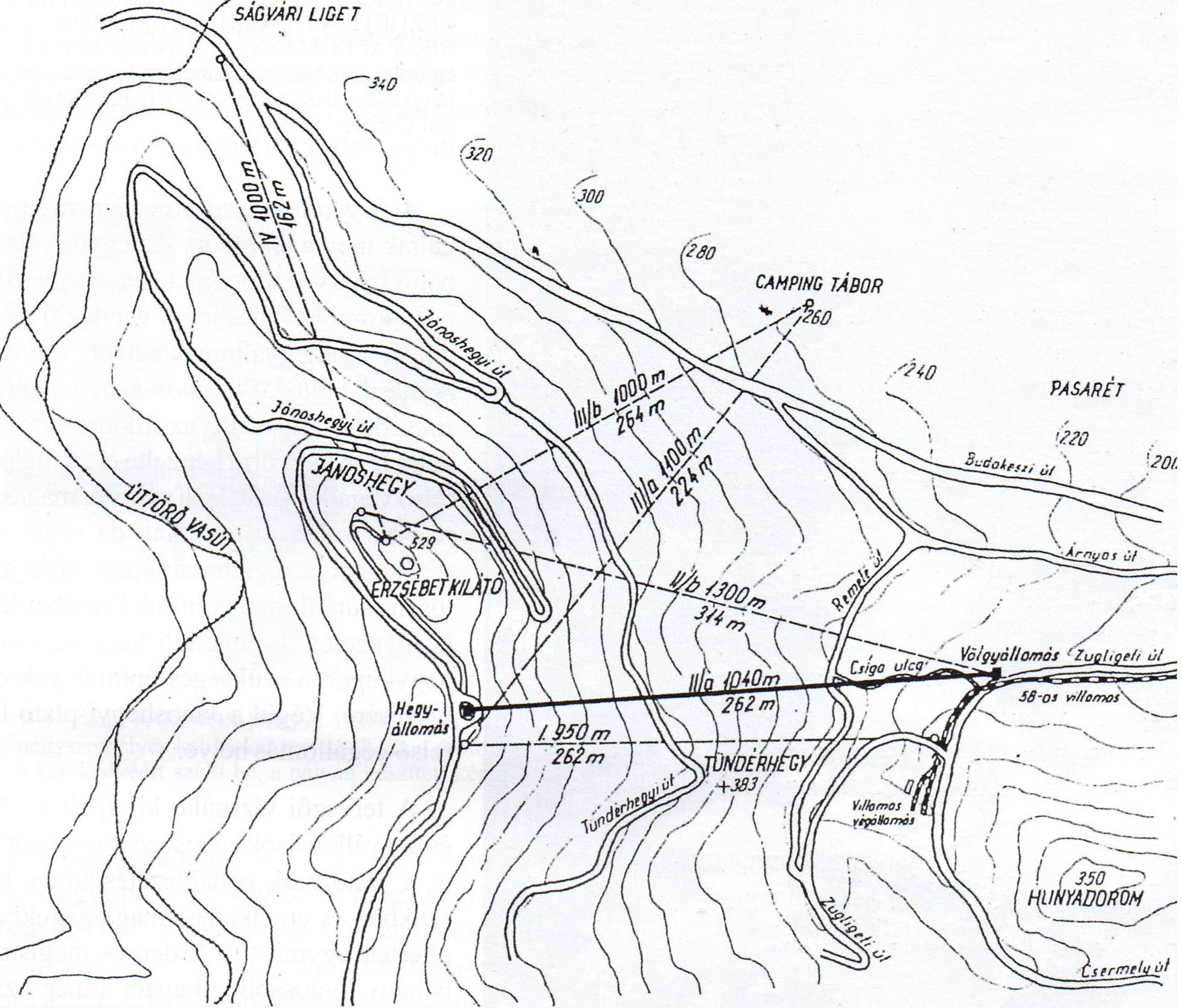
Examined route variants of the planned lift (Source: Közlekedéstudományi Szemle, June 1972)
Later, the plan for the chairlift was raised several times, and there was even an idea to build an entire cable car network, to which Óbuda and Hármashatár Hill would have been connected. These did not materialise. After the military communications base was built on János Hill and the Hármashatár Hill, Kis Svábhegy and Sas Hill also came under partial military control. Finally, the 12th District council raised the idea again. Construction work began on 24 March 1969, according to plans by UVATERV (Road and Railway Planning Company), with Országos Bányagépgyártó Vállalat (' National Mining Machinery Manufacturing Company') carrying out the work. The first difficulty was the placement of concrete foundations for the support columns on the steep terrain, as transporting materials to the steep hillside posed a serious problem. The assembled columns delivered to the site were placed on sledges and winched to their hillside location.
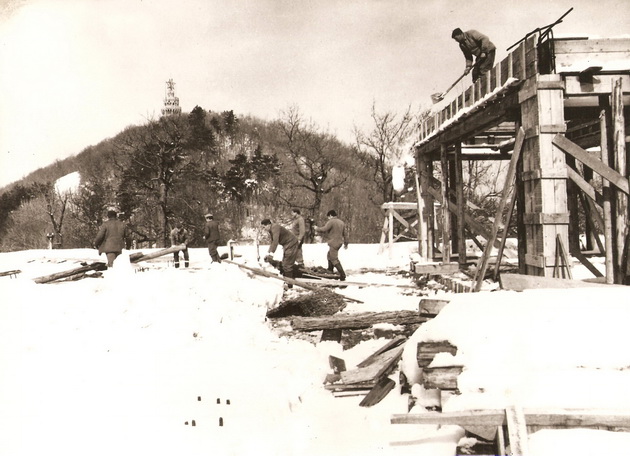
The work did not stop even in winter (Source: Hegyvidék Local History Collection)
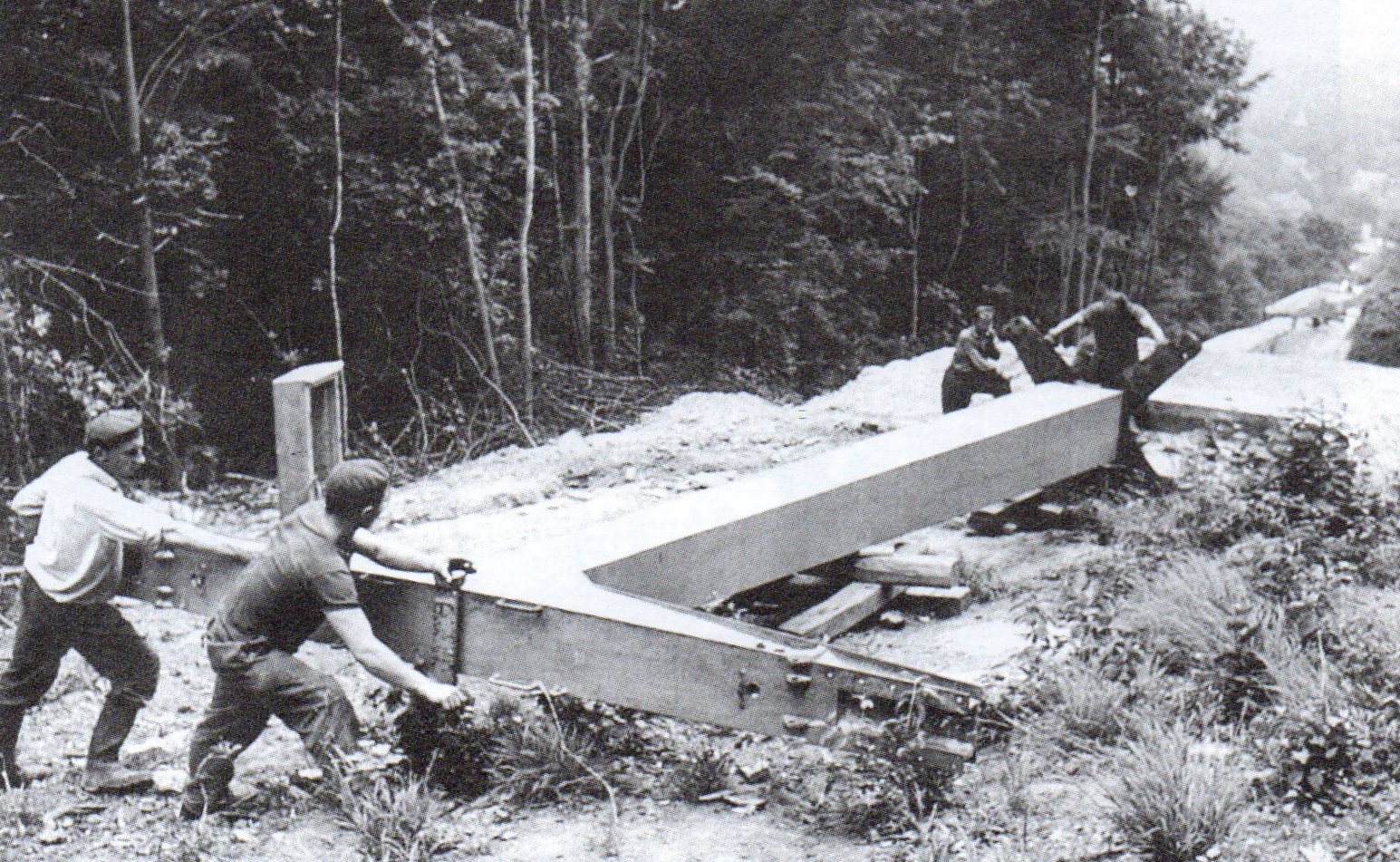
The columns were pulled up the steep hillside by hand (Source: András Salamin, Buda-hegyvidéki vasutak)
 Installing the wire (Source: András Salamin, Buda-hegyvidéki vasutak)
Installing the wire (Source: András Salamin, Buda-hegyvidéki vasutak)
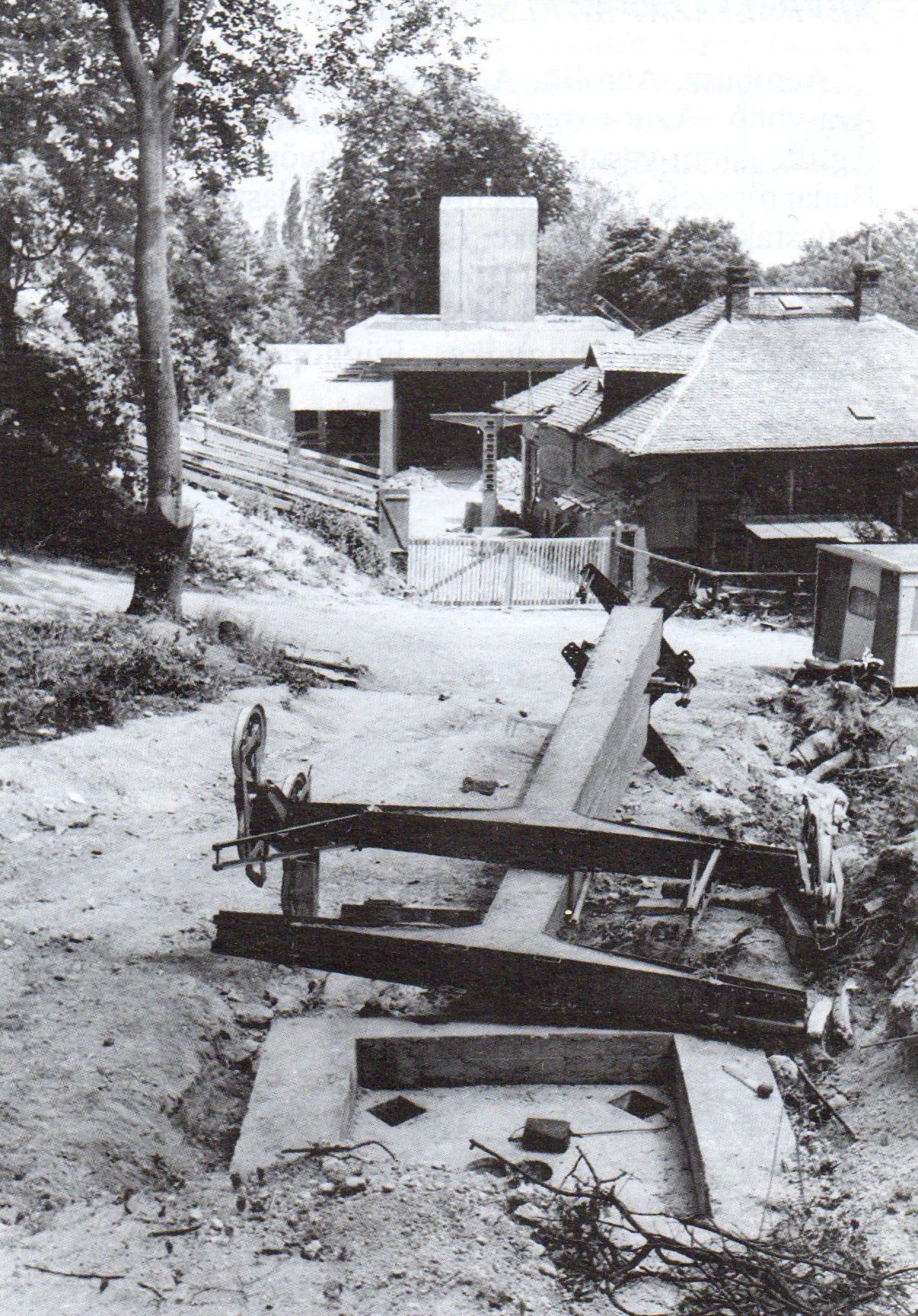
Construction of the chair lift at the lower terminus in 1969 (Source: András Salamin, Buda-hegyvidéki vasutak)
Plans for various cabins were floated. Eventually, the two-seater design was finalised. Nevertheless, a prototype of a standing cabin was also made. A photo of the trial has survived. Two people can be seen in the cabin; however, it travelled along the route empty.
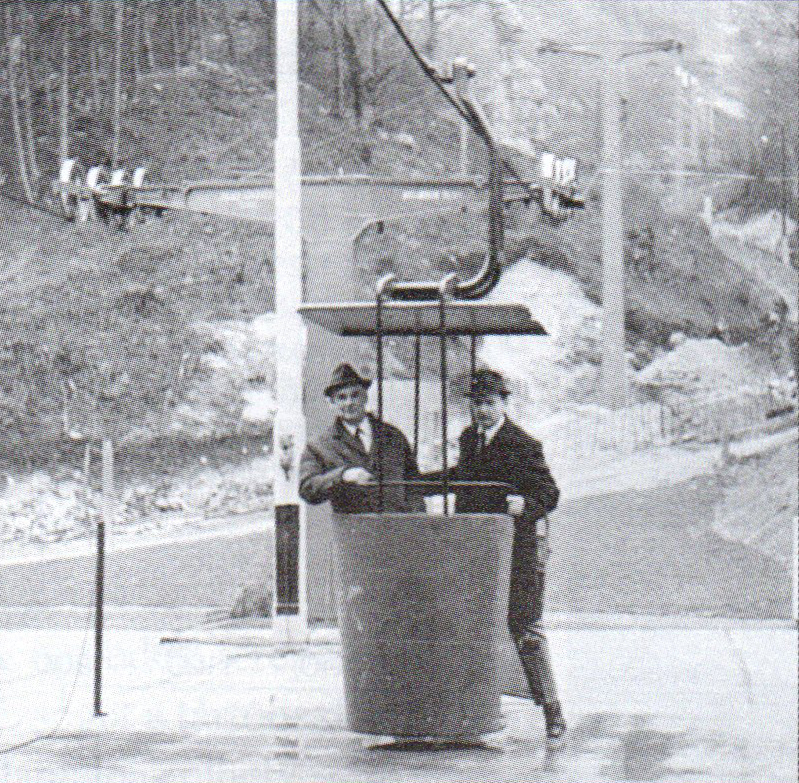
The prototype of the standing cabin, which was not used (Source: András Salamin, Buda-hegyvidéki vasutak)
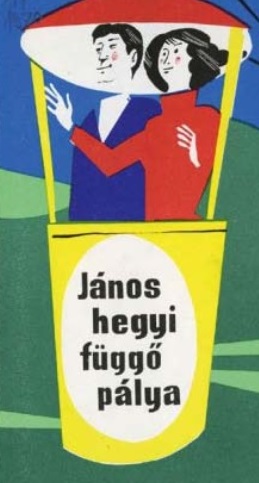
Early BKV advertisement, which also depicts standing cabins (Source: Budapest, August 2010)
A public tender was announced for the lifts name, for which nearly ten thousand ideas were received. Some of them (translated from Hungarian): Angel Railway, Steel Spider, Magic Chair, Wire Horse, Nausea, Heavenly Wheelbarrow, Armchair Lift, Pheasant Flight, Mountain-copter, Fairy Mountain Lift, Fairy Chair, Space shuttle, Tram chair, Zugibusz, Zuglift, Zugvasút. The judges finally chose a word that was not submitted. A similar Lebegő (float) was submitted, which was modified to Libegő. Those interested were excited by the possibility to influence the name giving. On 27 July 1970, Magyar Hírlap wrote about the winning name: “My esteemed colleague, Péter Ruffy, praised the democratism with which the Zugliget - János Hill cable car was given the name »Libegő« through a tender. After all, I could even be sad about this result, because it was here where I voiced my support for Jancsi – but I'm less offended because Ruffy himself says that he would have supported something similar, Jánoska."
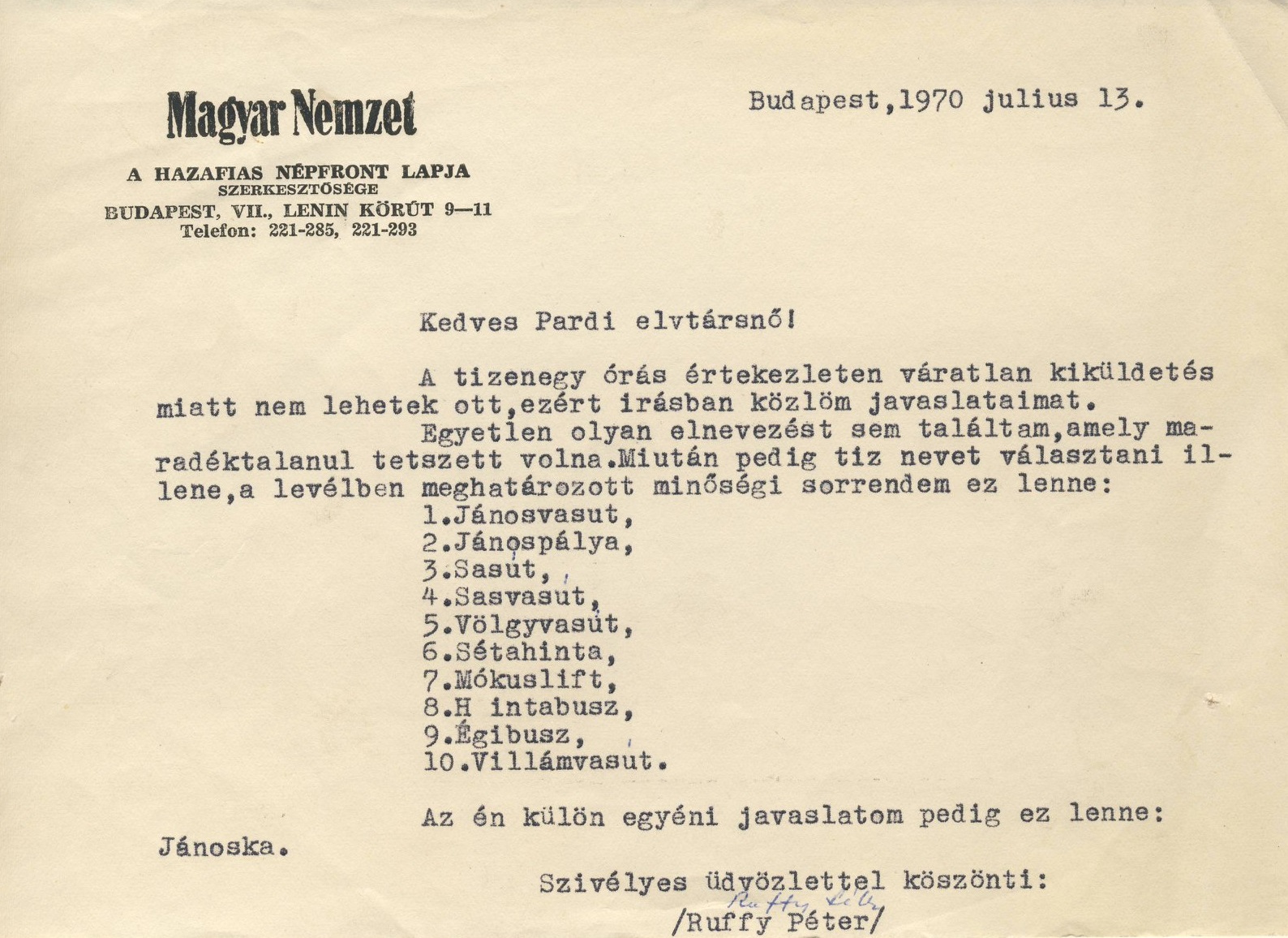 Archive document with the suggestions of journalist Péter Ruffy (Source: Hegyvidéki Local History Collection)
Archive document with the suggestions of journalist Péter Ruffy (Source: Hegyvidéki Local History Collection)
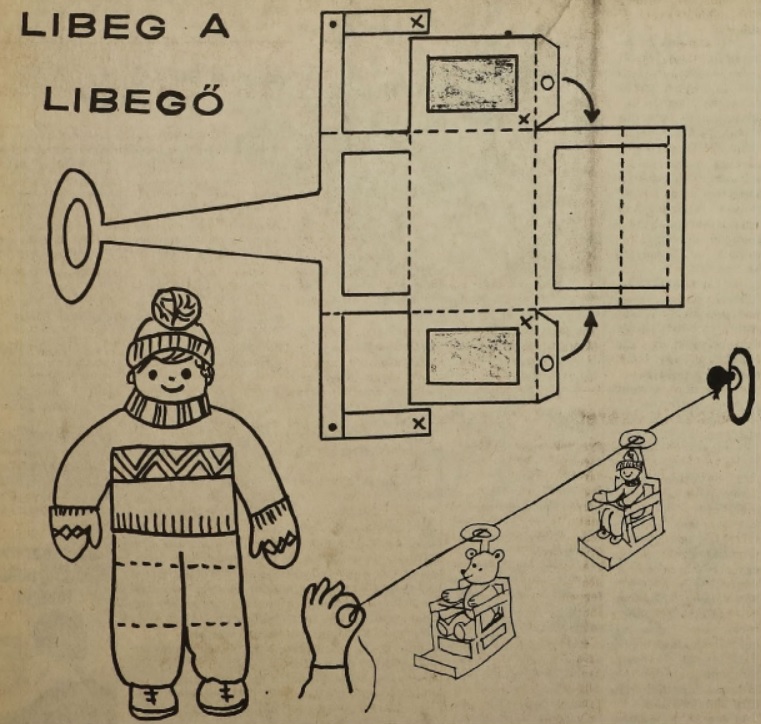
Various children's toys also appeared in newspapers that could be put together at home (Source: Chicago és Környéke, 18 February 1978)
The grand opening took place on 19 August 1970. György Csanádi, Minister of Transport and Post, was the first official passenger after cutting the ribbon with István Barta. Afterwards, members of the press also tried the chair lift, which soon became a favourite of visitors from Pest and the countryside. The cable car was completed in less than a year, at the cost of about 23 million forints. It is 1,040 metres long, from the János-h Hill lookout tower to the intersection of Zugligeti and Csiga Roads, passengers can “float” in their chairs at the height of 12–13 meters. Its speed is 5.3 kilometres per hour. Travel time was 12 minutes in the beginning, and today is roughly 15 minutes. The chairs follow each other every 18 seconds, and the first fare was HUF 5 for a one-time “lift” and HUF 7 for a round trip.
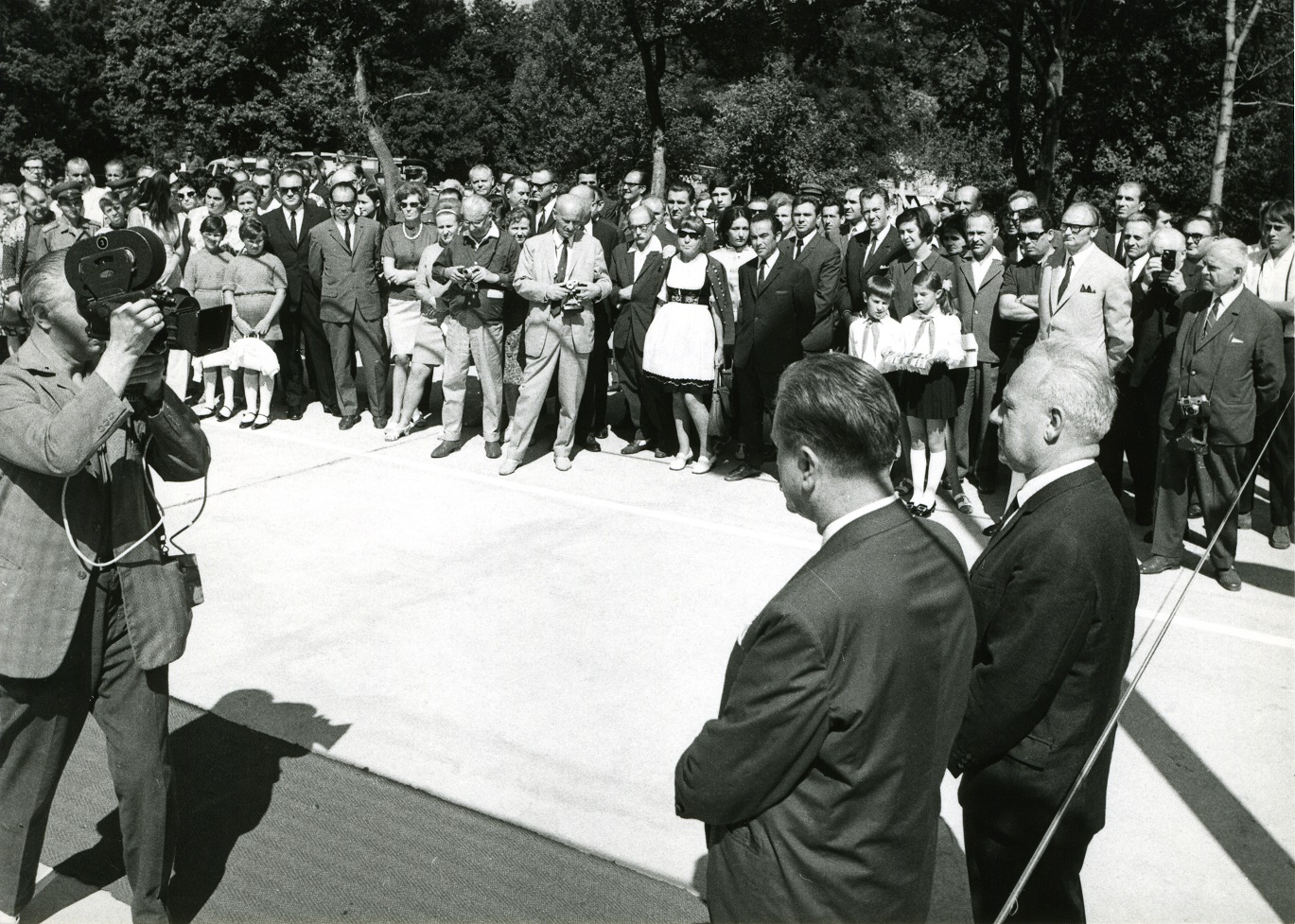 Opening ceremony at the upper terminus of the chair lift on 19 August 1970 (Photo: Hegyvidék Local History Collection)
Opening ceremony at the upper terminus of the chair lift on 19 August 1970 (Photo: Hegyvidék Local History Collection)
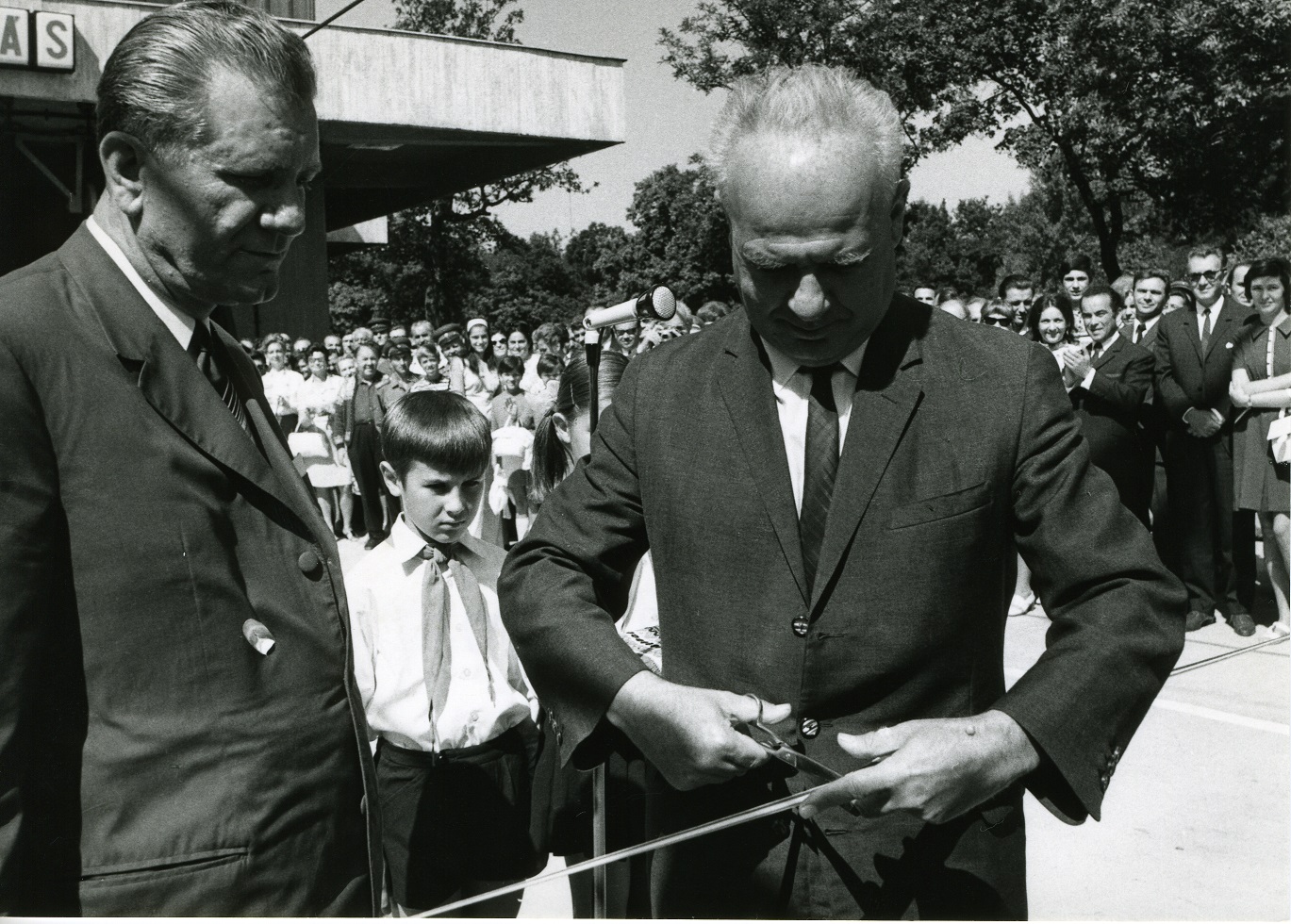
The ribbon was cut at the opening ceremony (Photo: Hegyvidék Local History Collection)
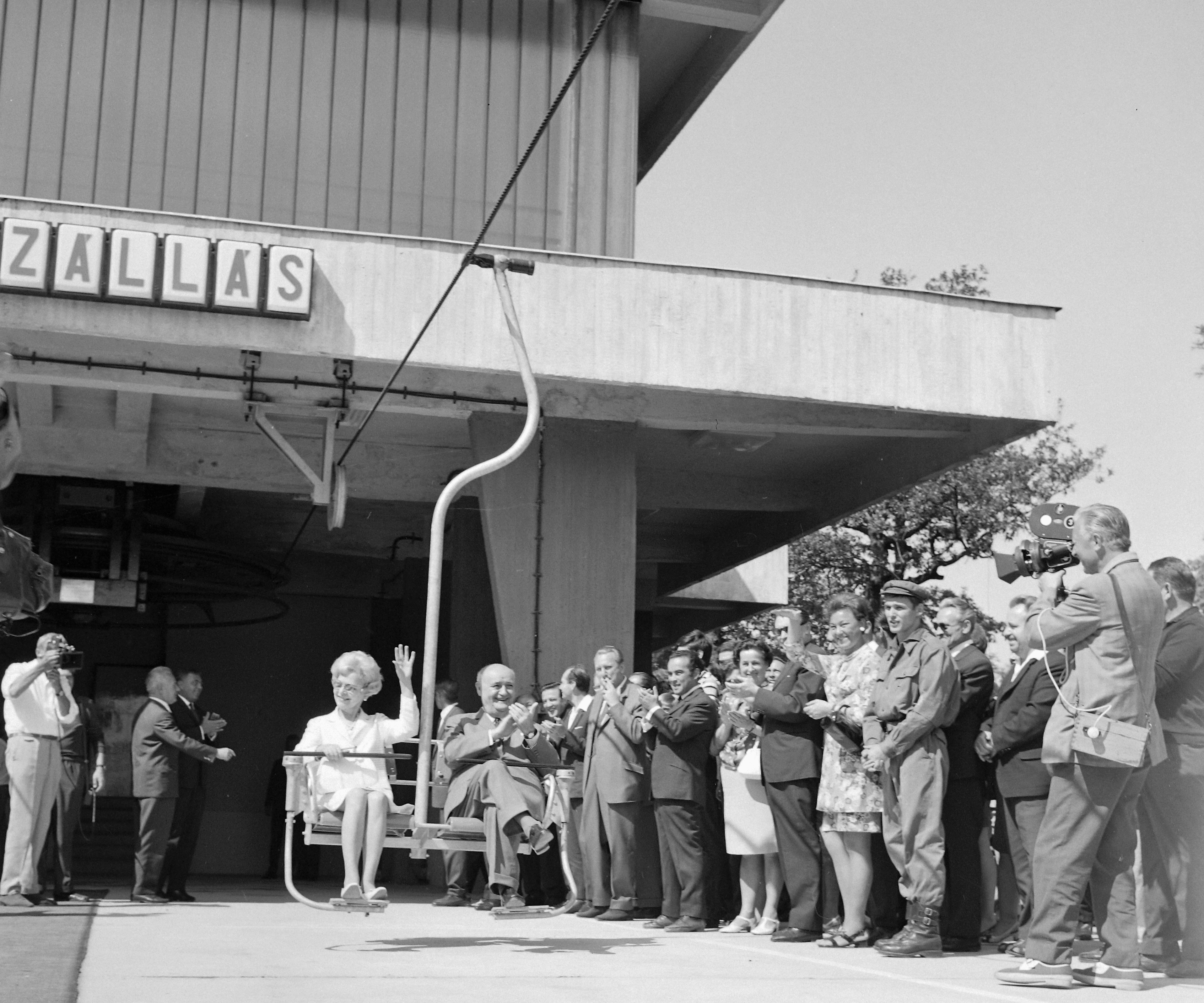
Dr György Csanádi, the Minister of Transport and Post, and his wife were the first official passengers of the Libegő (Photo: Hegyvidék Local History Collection)
Although newspapers everywhere noted that the first passenger of the capital’s new means of transport was Dr György Csanádi, Minister of Transport and Post, this is only partially true. It is well known that before such a new system is opened over, several mechanics and workers will test it, so quite a few travelled on the chairlift even before it was opened. However, it is less known that the first real trial was conducted with sandbags to prove the weight-bearing capabilities of the lift. At first, the lift was red. It was painted green during a renovation in 1990-1991.
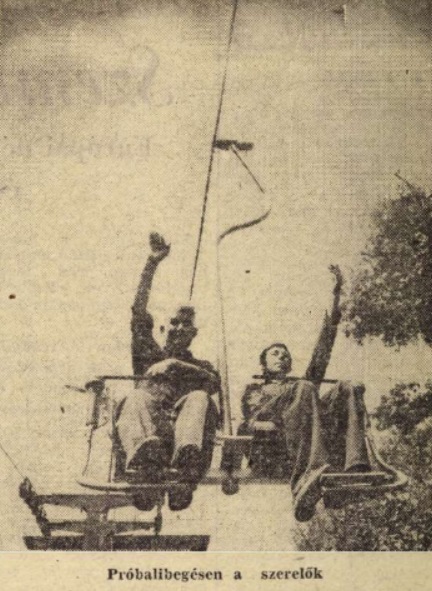
Before the official opening, several people tried the lift. At first only sandbags travelled, then mechanics (Source: Népsport, 20 August 1970).
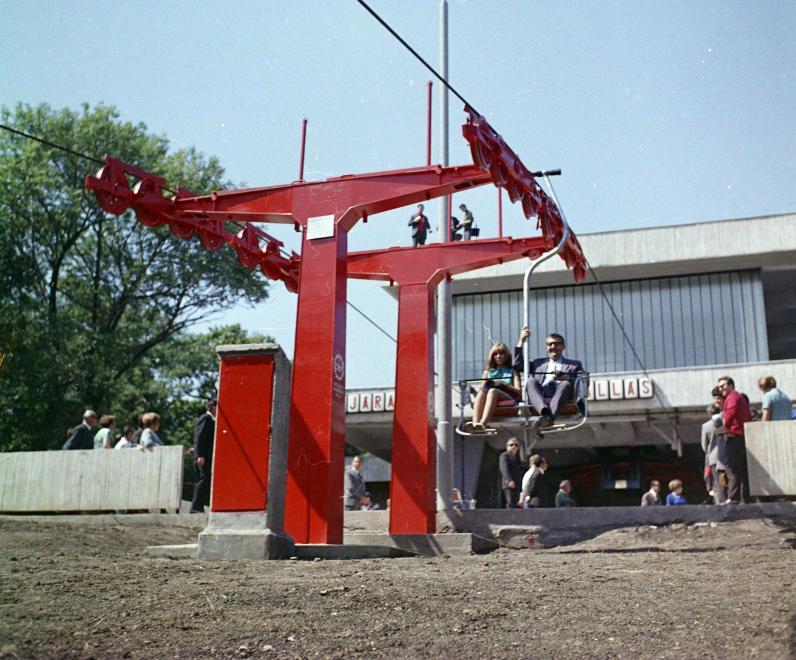
The original red of the chairlift was painted green in 1991 (Photo: Fortepan / UVATERV, No.: 94895)
The chair lift quickly became one of the most popular places in Budapest. In August 1972, a couple held their wedding on the lift, and they travelled on it with all their guests after the wedding dinner. There have been several fanatics of the lift, such as opera singer Mária Sudlik, and her husband, the conductor, János Kovács, who made a round trip every day in the 1990s.
On 2 September 1995, Kurír reported on the 25th birthday of the lift as follows: “The couple who held their wedding in the sky thanks to the chair lift was invited to the 25th-anniversary celebrations. The Lencsés family, who travelled on the chair lift with all their guests after their wedding dinner attended the event with their two grown sons. Mrs Lencsés admitted that the "honeymoon” in the air had been so memorable that she hadn’t dared sit on the lift ever since. However, in honour of the anniversary, she overcame her vertigo and travelled up the mountain again."
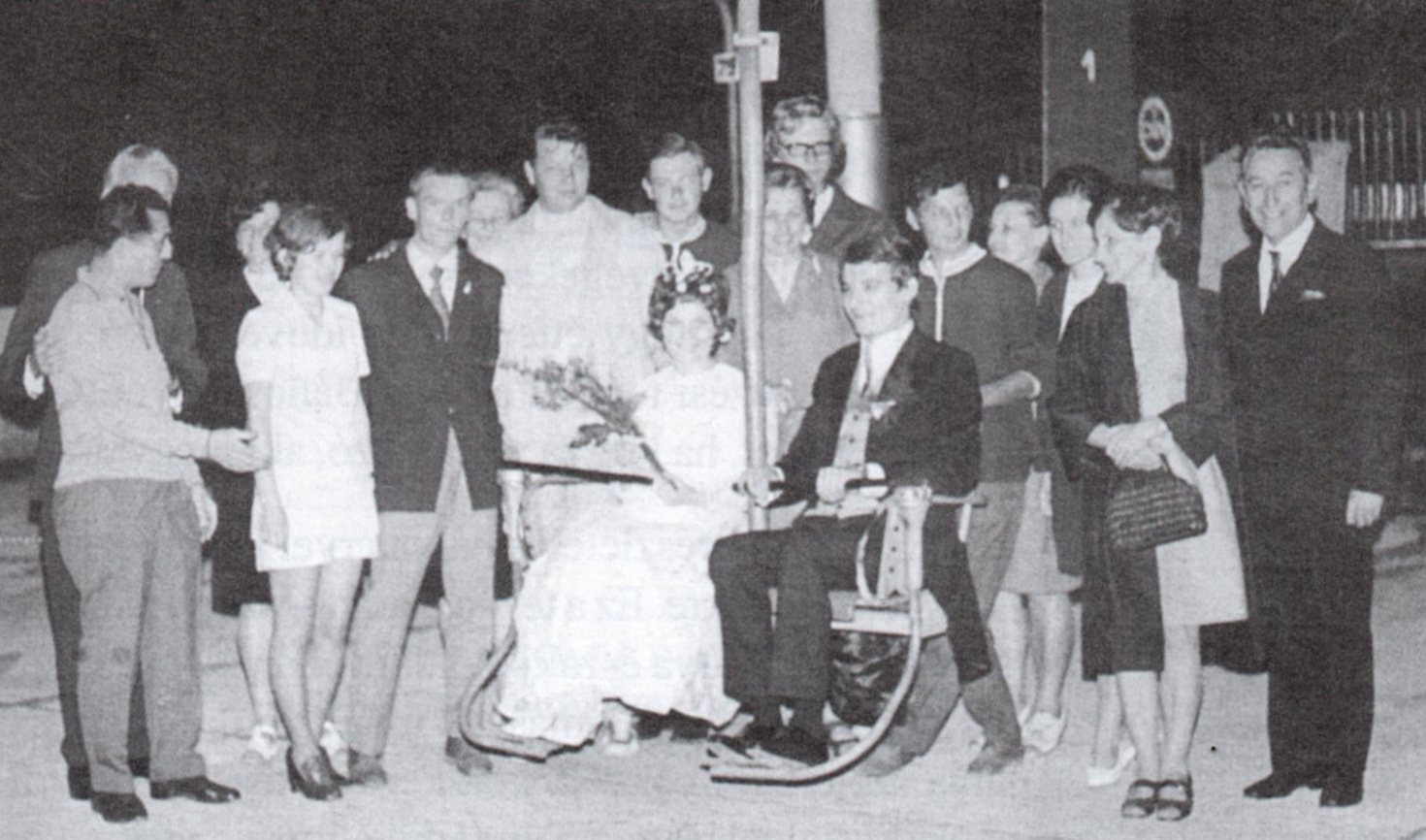
Wedding on the lift, 5 August 1972 (Source: András Salamin, Buda-hegyvidéki vasutak)
Although sitting is strictly required when travelling on the lift, one man once completed the trip standing for an ad shoot. In the late 1970s, stuntman Mihály Kocsis travelled while standing on the chair lift for one of the most successful commercials for Trapper jeans. In the 1970s and 1980s, stuntman Mihály Kocsis was also welcomed with smiles as he arrived on horseback, on the chairlift, on water skis, or from underwater. The Libegő later appeared in several Hungarian films, and on several occasions, attract attention with advertisements and discounts.
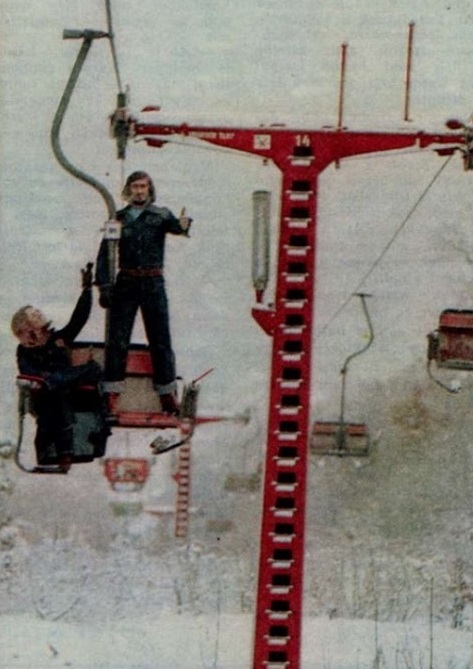
Stuntman Mihály Kocsis travelled, standing in the chairlift in one of Trapper's jean commercials.
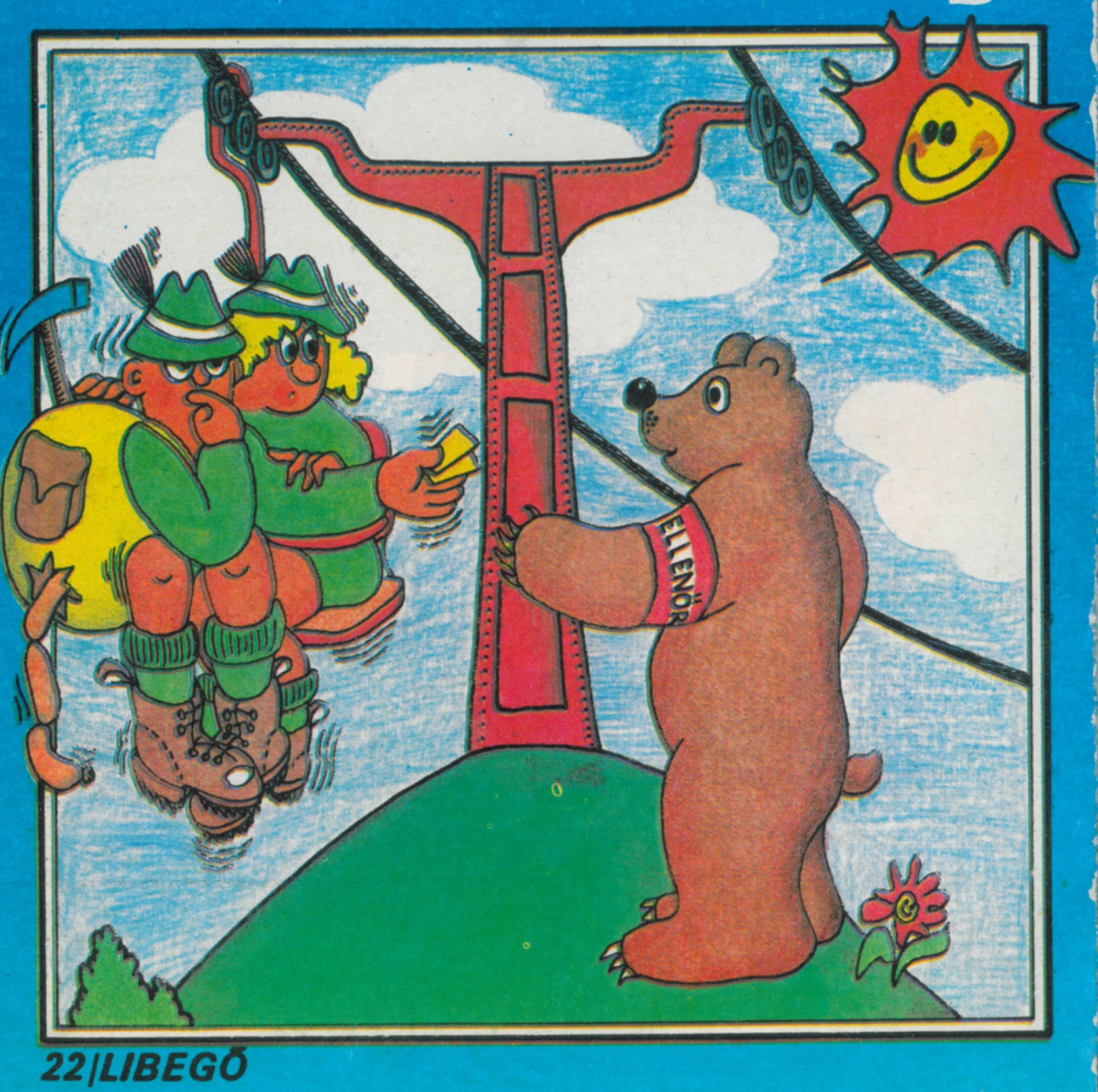
An ad for the chair lift (Source: Mountain Local History Collection)
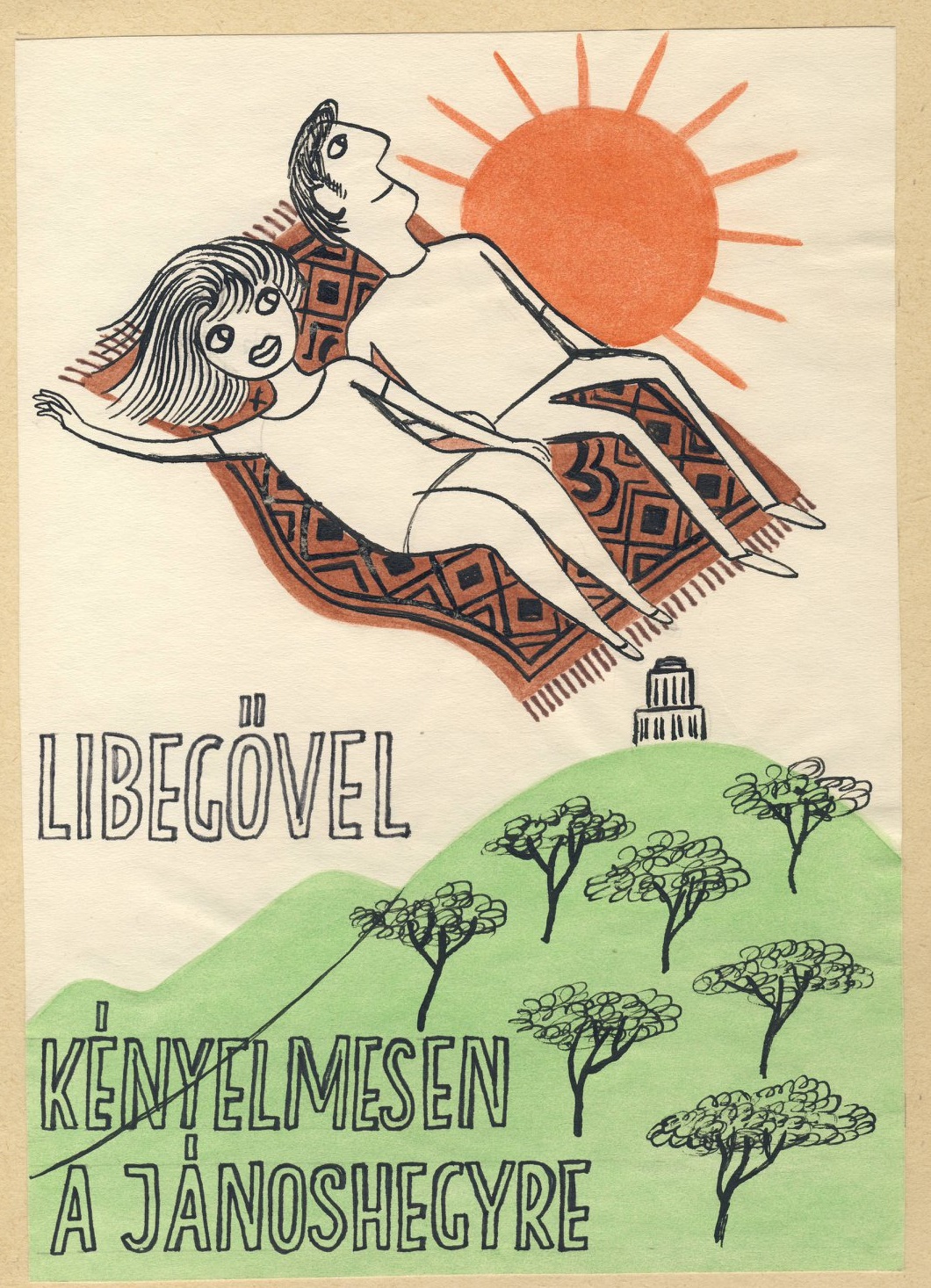
Another ad likens the journey to a magic carpet ride (Source: Hegyvidék Local History Collection)
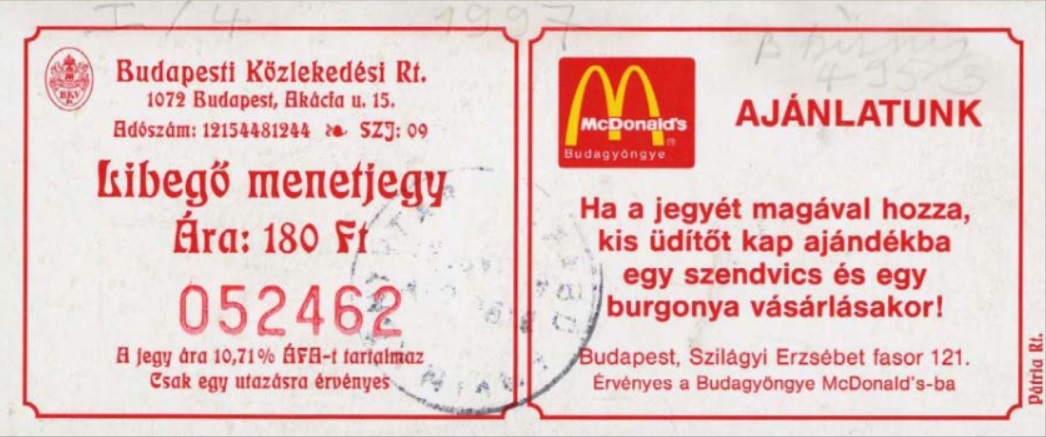
Popularising the lift (Source: Budapest, August 2010)
Love for the chair lift has been unbroken ever since, and in good weather, huge lines can be seen at both stations. Several sights can be spotted from the lift. Starting from the base station, these are Klára Rock on the left, which everyone knows only as Remetefej Rock, the Csiga Stairs run below the lift, then the Remete Road which has been in use for nearly 300 years, with the Remete Pub House, and the reconstructed Margit Révész Special Education Sanatorium is visible as well.
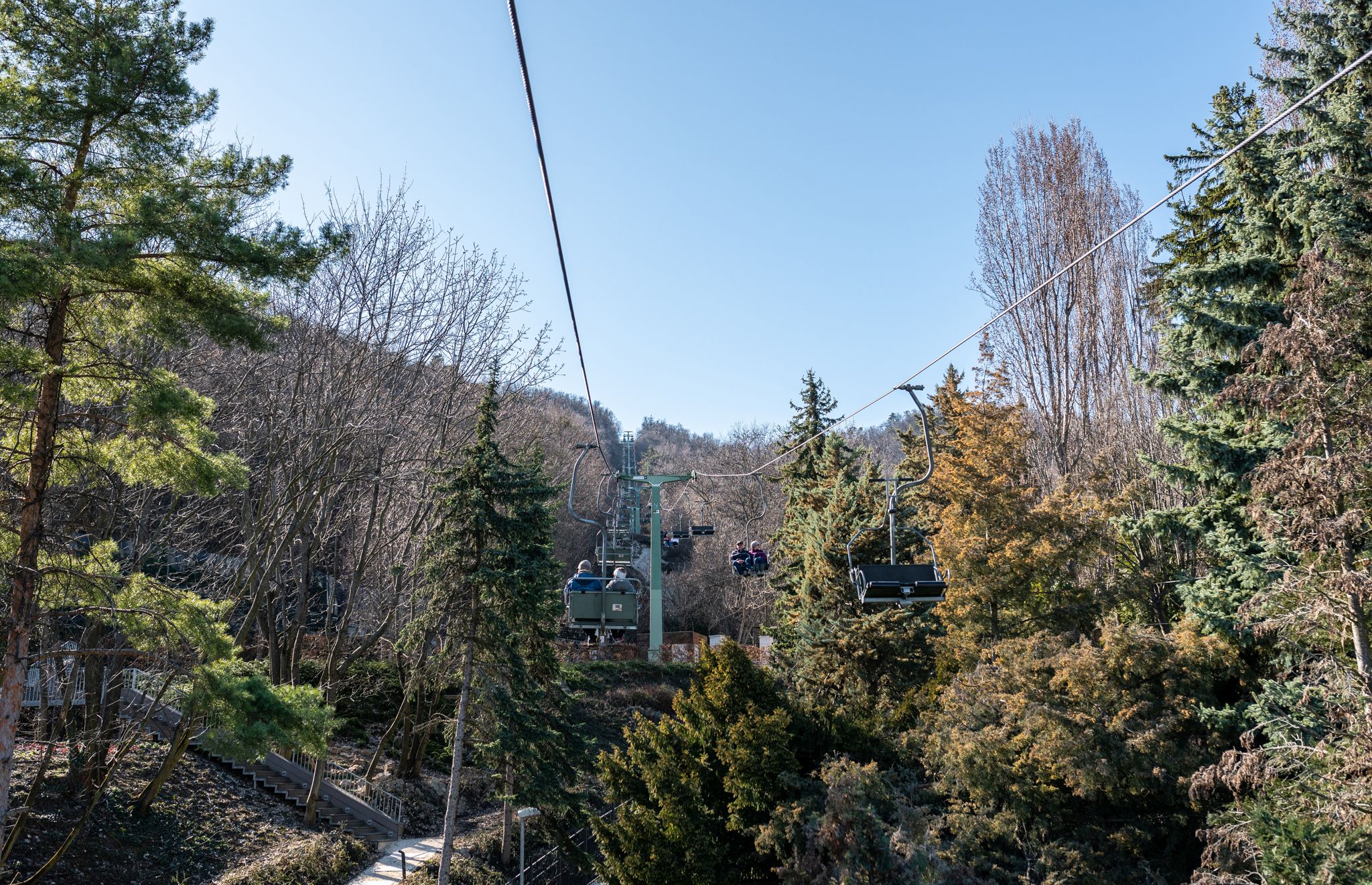
Travelling upwards, many interesting sights to be spotted (Photo: Balázs Both/pestbuda.hu)
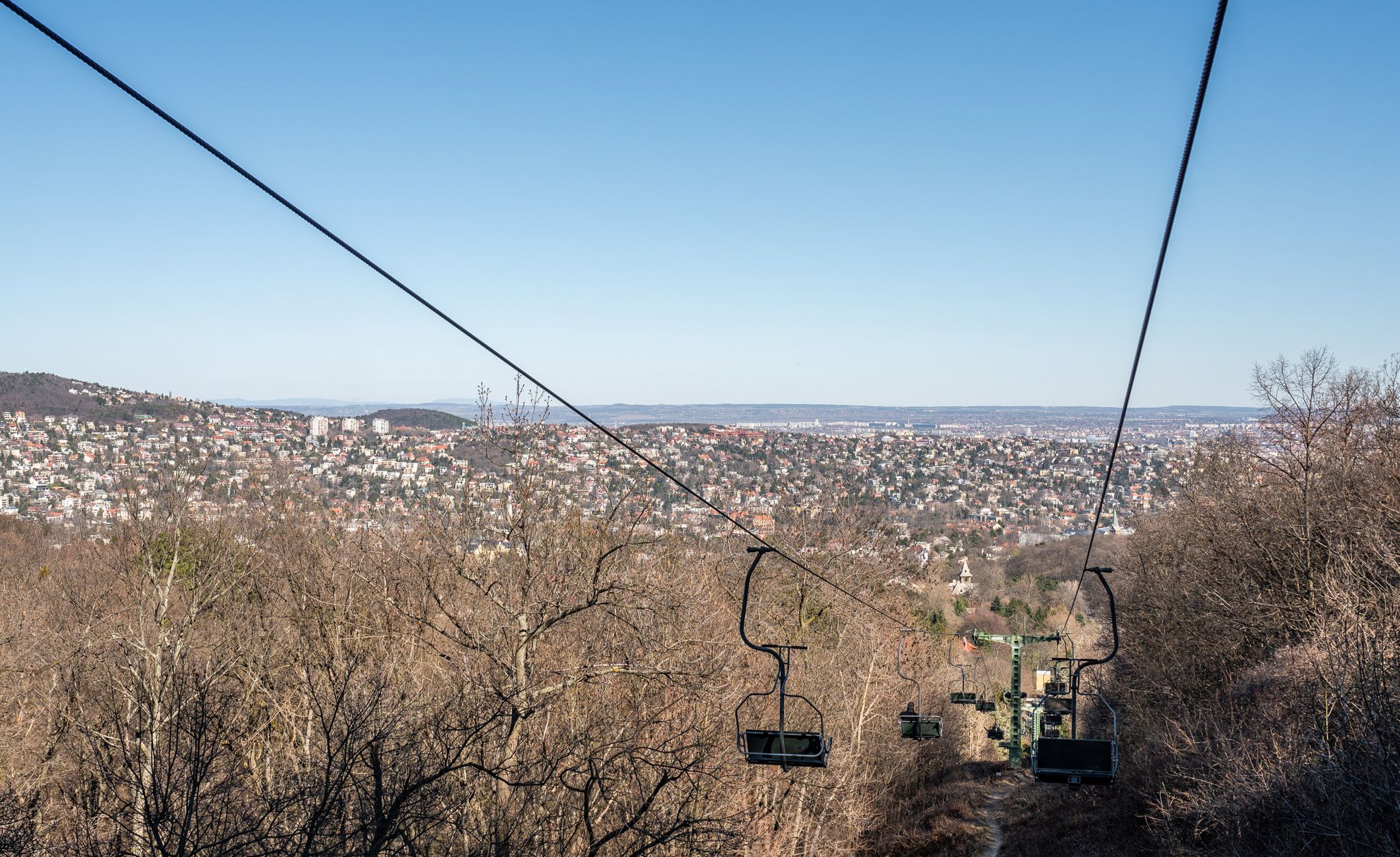
Travelling down, a beautiful view of Budapest (Photo: Balázs Both/pestbuda.hu)
On the downhill, the view of the Hármashatár Hill range, the peaks of the Pilis Hills, and the view of Buda and Pest is beautiful. To this day, the chair lift offers many thousands of people an exciting and cosy opportunity to relax in Budapest.
Cover photo: Lifts at the opening ceremony (Photo: Fortepan/UVATERV, No.: 97932)

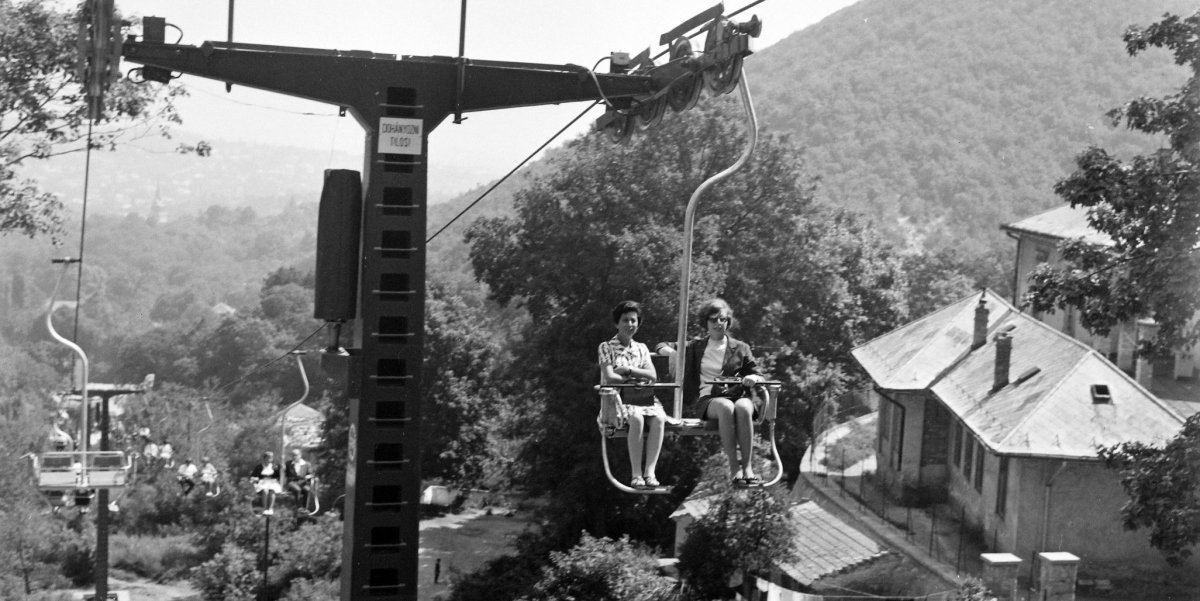



































Hozzászólások
Log in or register to comment!
Login Registration